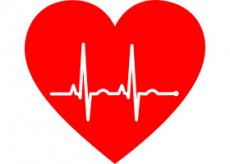New publications
Heart cells tend to self-organize
Last reviewed: 02.07.2025

All iLive content is medically reviewed or fact checked to ensure as much factual accuracy as possible.
We have strict sourcing guidelines and only link to reputable media sites, academic research institutions and, whenever possible, medically peer reviewed studies. Note that the numbers in parentheses ([1], [2], etc.) are clickable links to these studies.
If you feel that any of our content is inaccurate, out-of-date, or otherwise questionable, please select it and press Ctrl + Enter.

In the heart, some cells periodically lose the ability to conduct impulses. In order not to disrupt cardiac activity, cardiomyocytes are able to form a separate branched conduction system.
Cardiomyocytes are responsible for the contractile function of the heart. We are talking about special cells that are capable of generating and transmitting electrical impulses. However, in addition to these structures, the heart tissue is represented by connective tissue cells that do not transmit the excitation wave - for example, fibroblasts.
Normally, fibroblasts hold the structural framework of the heart and participate in the healing of damaged tissue areas. With a heart attack and other injuries and diseases, some cardiomyocytes die: their cells are filled with fibroblasts, like tissue scarring. With a large accumulation of fibroblasts, the passage of an electrical wave worsens: this condition in cardiology is called cardiofibrosis.
Cells that are unable to conduct an impulse block the normal activity of the heart. As a result, the wave is directed around the obstacle, which can lead to a circulatory pathway of excitation: a rotational spiral wave is formed. This condition is called a reverse impulse course - this is the so-called re-entry, which provokes the development of a heart rhythm disorder.
Most likely, high-density fibroblasts cause the formation of a reverse pulse stroke for the following reasons:
- non-conducting cells have a heterogeneous structure;
- a large number of formed fibroblasts are a kind of labyrinth for wave flows, which are forced to follow a longer and more curved path.
The peak density of fibroblast structures is called the percolation threshold. This indicator is calculated using percolation theory - a mathematical method for assessing the emergence of structural connections. Such connections at the moment are conducting and non-conducting cardiomyocytes.
According to scientists' calculations, cardiac tissue should lose its ability to conduct when the number of fibroblasts increases by 40%. It is noteworthy that in practice, conductivity is observed even when the number of non-conductive cells increases by 70%. This phenomenon is associated with the ability of cardiomyocytes to self-organize.
According to scientists, conductive cells organize their own cytoskeleton inside fibrous tissue in such a way that they can enter into a common syncytium with other heart tissues. Specialists assessed the passage of an electrical impulse in 25 connective tissue samples with different percentage levels of conductive and non-conductive structures. As a result, a percolation peak of 75% was calculated. At the same time, scientists noticed that cardiomyocytes were not located in a chaotic order, but were organized into a branched conductive system. Today, the researchers continue their work on the project: they are faced with the goal of creating new methods for eliminating arrhythmias, which will be based on the information obtained during the experiments.
Details of the work can be found at journals.plos.org/ploscompbiol/article?id=10.1371/journal.pcbi.1006597
